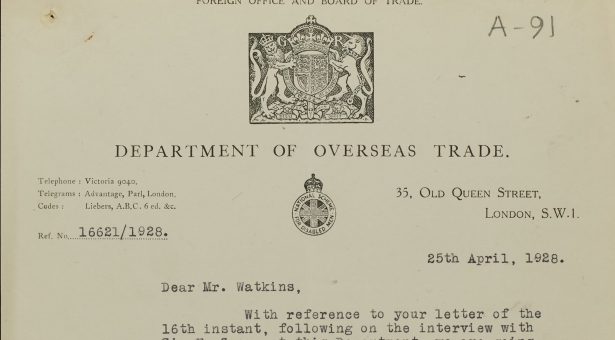26th June 2024

Crop science is beginning to reap the benefits of Arthur Ernest Watkins’ work in the early 20th Century to assemble a diverse collection of local cultivars of wheat.
As wheat scientist Robert Koebner wrote of this unassuming pioneer in the Genetics Society magazine, “Over 50 years since Watkins’ death and about 100 years since his collection was assembled, the memory of this ostensibly quiet, shy scientist and his life’s work lives on in the form of a resource of relevance to both the genetics and improvement of the UK’s most important crop species.”
In this article we share a bit more about AE Watkins, and try to reveal how and why he came to have a vast collection of wheat seeds in the UK.
The A.E. Watkins landrace collection of bread wheat (known as the Watkins collection) is the result of an ambitious scientific endeavour which saw over 1,000 wheat landraces collected from 32 countries around the world in the 1920s and 1930s.
This vast collection of wheat seeds is a rich genetic resource that encompasses geographic and phenotypic diversity and today totals 827 landraces or locally adapted lines collected from European, Asian, and North African countries.
Over the last 100 years this resource has been stored, preserved, and developed through publicly- funded initiatives and supported by research institutes. It is now kept in the John Innes Centre’s Germplasm Resource Unit on the Norwich Research Park where it is expertly cared for to ensure that it can be used to benefit humanity now and into the future.
Before the advent of modern plant breeding farmers selected and improved traditional landraces or varieties grown in their local area. They might exchange seed with neighbours or buy seed from the local market. This is how wheat slowly spread around the world, after emerging from the fertile crescent 10,000 years ago.
In this manner, local adapted varieties of crops (landraces) were developed to be suited to the local environment, soil, climate or altitude. In the early 20th Century, with the early understanding of inheritance William Bateson coined the term genetics, and this new scientific field fed into the way plants were improved.
Watkins, with his peers, foresaw the impact that these scientific advances would have on the diversity of crops, and in particular wheat, around the world. They correctly predicted that modern plant breeding would displace the locally grown landraces that farmers had been growing, trading and selecting for almost 10,000 years.
During the first World War, Watkins was an assistant agricultural officer. On return from France where he worked to secure food for troops he began work as an academic in Cambridge.
In the 1920’s, Watkins worked in the plant breeding department at the University of Cambridge and was tasked with collecting wheat varieties from around the world to preserve the diversity found in the local landraces.
As directed, Watkins and his contemporaries, Vavilov and Percival, began collecting seeds from around the world.
In this endeavour, Watkins used his London Board of Trade connections from the war, to contact a network of collectors stationed across the British Empire. These collectors were tasked with finding landraces of wheat. Watkins prudently instructed them not to go to the modern breeding stations, but to go to the more remote parts of the country or to the local markets.
This network of collectors were not experts, they were from embassies and consulates, or they were soldiers, sent out to buy some seed and send it back to Cambridge, England. This worked well, however it wasn’t without its mishaps; Watkins wrote that some of the seed was not right, and in some cases he was sent barley instead of wheat.
Over the collection period, Watkins’ amassed over 1000 lines of bread wheat (plus many more of durum or pasta wheat), however many of these were lost over time.
Despite many challenges, Watkins kept almost all of this huge collection of seeds alive and viable for many decades, and that is key to how we can benefit from this collection now. There were periods when it was not possible to keep the preservation of this huge collection going. It was a truly massive undertaking, with the collection of seeds needing to be stored correctly and to be regrown at least every 5 years to ensure their ongoing viability.
These challenges meant that the Watkins Collection had around 1000 lines of bread wheat, and over time this decreased to 827 lines. It is this collection, along with the hundreds of lines of pasta wheat that is under the care of the Germplasm Resource Unit team here at the John Innes Centre.
Over the past 12 years, the Watkins Collection has been at the centre of a huge national and international effort to understand the genetic diversity contained within.
A research paper, and international consortium effort has shown that the Watkins Collection is in fact a precious genetic resource rich in diversity, 60% of which this remains unused in modern wheat varieties.
Recent developments in of genetic techniques, technologies and tools to understand and unravel the complex genetics of wheat, means we can now access and deploy this gold mine of genetic diversity into modern wheat varieties to secure the future of wheat in a changing climate.